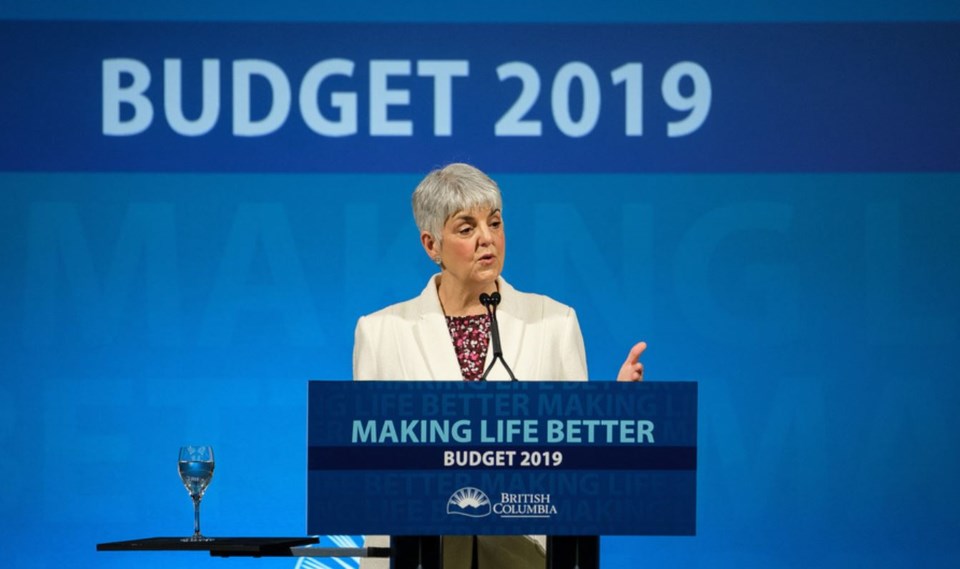Do not let what appears to be a relatively small budget surplus fool you: Finance Minister Carole James has socked more than a billion dollars away.
On paper, last week’s provincial budget projects a tiny $274-million surplus in a budget that forecasts spending at more than $58.3 billion. That surplus represents less one half of one per cent of total spending, so there does not look like there is much room for error.
Oh, but there is.
James has prudently built into the budget an unusually high contingency fund of $750 million. On top of that is a “forecast allowance” of $500 million. Added to the surplus figure and it shows James has $1.5 billion of unallocated spending, ready to be used if disaster strikes.
Then there is the question attached to every provincial budget: are the revenue forecasts set deliberately lower than the dollars that are really expected to flow into the provincial treasury?
If revenues do indeed exceed the expectations set out in the budget, the surplus grows and grows throughout the year with the publication of quarterly financial reports. This makes whoever happens to be the finance minister look like a fiscal wizard.
For example, the 2018-19 budget underestimated personal and corporation income tax revenue by a whopping $2.5 billion. Overall, revenues were $2.4 billion higher than originally forecast.
Some expenditures were higher than usual, but the surplus (after accounting for the forecast allowance and a decision to deliberately spend some of the surplus at the end of the current fiscal year) still came in at more than $1 billion. The budget, when it was tabled last year, forecast a surplus of just $219 million.
This prudent rainy-day fund approach is not confined to just the next fiscal year. It is incorporated into the government’s three-year fiscal plan, to the tune of $2.3 billion on top of the coming year’s $1.5 in unallocated spending.
Even with the risks every B.C. finance minister faces – wildfires, for example – James has built enough fiscal resilience into her plan to weather pretty much any storm, at least in the short term.
She has also shown a willingness to do something that her BC Liberal predecessors failed to do - spend some of that budget surplus on people, instead of just applying it all to government debt.
She has earmarked $375 million out of this year’s surplus (it has to be spent by the end of the fiscal year on March 31) and she plans to sprinkle most of it around various local governments, primarily for small infrastructure and research projects.
It is another reminder of a big reason why the BC Liberals lost the last election. They ended that fiscal year with a surplus of $2 billion, yet did not spent a single extra cent on anyone as election day approached.
James is not going to make the same mistake.
Keith Baldrey is chief political reporter for Global BC.



